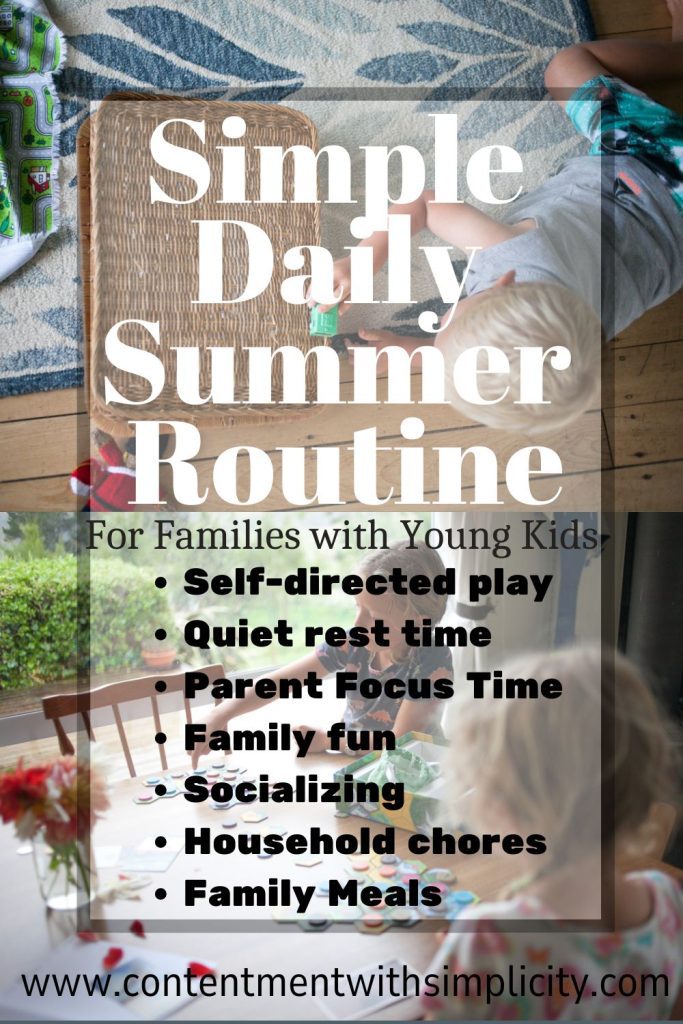Slow, Simple Daily Summer Routine with Little Kids
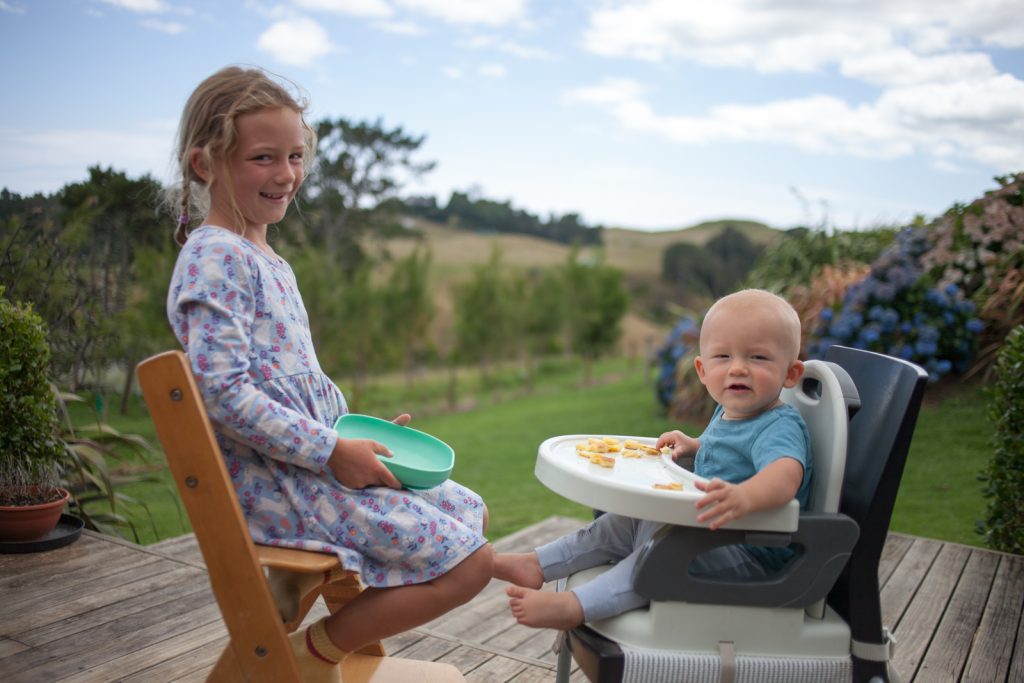
A daily summer routine is essential in our home to create the summer we want to live with our young kids.
Summer was the golden months of the year in my childhood. Long, hot days full of sunshine, and plenty of time to play and create and spend time outside.
And for parents, summer can be an intentional time to connect and make memories as a family, and time to relax and enjoy our kids.
OR summer can be a stressful season of running around hectically, with whining and complains of “I’m bored” and endless requests for snacks.
The difference between those two scenarios is a simple, daily summer routine for your family.
This post will walk you through the daily summer routine we’ve developed with our four young kids. We are in the thick of summer currently, and we are loving how our days unfold and how intentional our time as a family feels this summer.
If this topic is of interest to you, I also have a few other posts on Slow Summer Living as a family, including:
- Slow and Simple Weekly Summer Routine
- Indoor Summer Activities to do with Kids
- At-Home, Outdoor Summer Activities to do with Kids
- Out and About Summer Activities to do with Kids
- Simple Summer Sabbath Routine for Families
- Simple, Healthy Summer Dinners for Families
This post may contain affiliate links, which means I make a small commission at no extra cost to you. See my full disclosure here.

Quick Glance at our Daily Summer Routine:
One of my top priorities for my kids’ summer is to allow them to have a lot of unstructured play time. But having a WHOLE day in front of them to fill can feel overwhelming. So we intersperse free play time into a couple specific time chunks of activity and structure.
Our daily summer routine is comprised of five time blocks, with transition times happening between each of the time blocks. The transitions are kind of the “moving pieces” time of day, while the other chunks of time are usually a little calmer.
- Early Morning (Mom and Dad Work Time)
- Morning Time (Activity, Free Play)
- Early Afternoon (Rest/Independent Time)
- Late Afternoon (Activity, Free Play Time)
- Night/Bedtime
I’ll share about what specific things we do in each time block on a typical summer day, and why we have found those things to be helpful for our family.
I’ll also share the approximate time frame for each section of our routine, but the times definitely flex and vary a little each day. So if you implement aspects of this routine into your own life, don’t feel like it needs to be really regimented!

Why do you need a Daily Summer Routine?
Humans – and especially kids – thrive on routines. Routines help kids know what to expect, and they help everyone spend more of their brain power focused on learning or savoring and enjoying rather than trying to predict and trouble shoot for what is next.
HeadStart.gov explains that routines help us feel confident and secure. Without the structure of school or organized activities, the main routines our kids experience will be the ones in our homes.
As a family that values intentionality and a slow, simple lifestyle, we wanted to create a framework and structure for our summer days to support our family values of promoting self entertaining, reading, outdoor time and physical movement, and positive sibling relationships.
Is our family perfect? No. Do the kids sometimes fight with each other, whine and ask for snacks? Absolutely!
But following this simple daily summer routine the majority of the time has allowed our whole family to relax into summer and thrive individually and as a family unit.
If you want more ideas about developing a slow, family-oriented peaceful evening routine or peaceful morning routine, you can check out my posts on those topics as well!
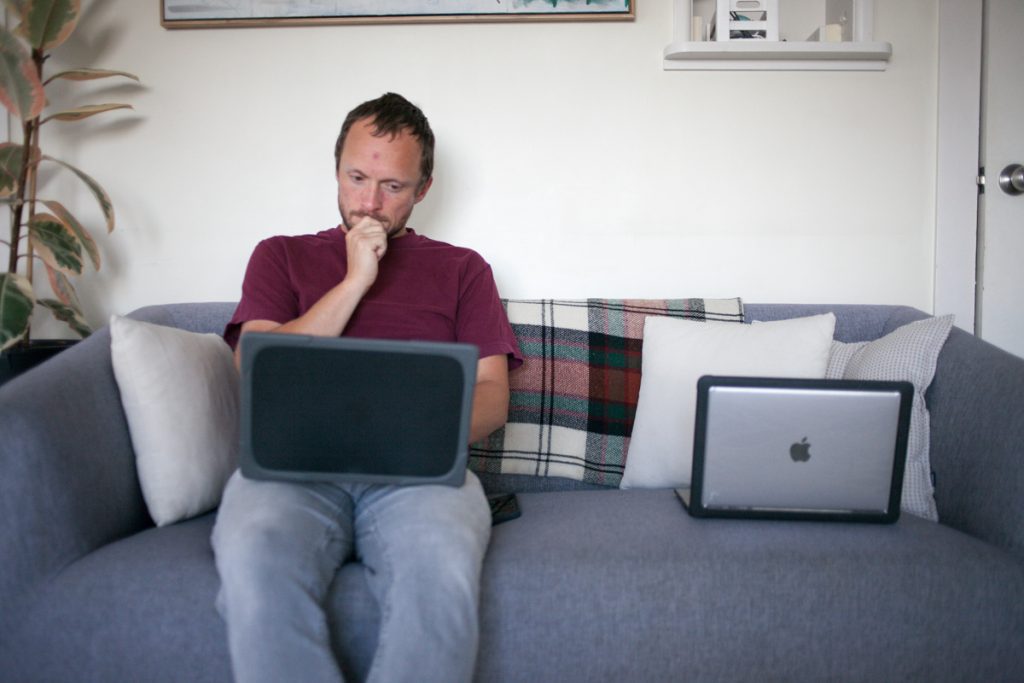
Block 1: Early Morning Work Time – Parental Power Hour during a Daily Summer Routine
Approximate time block: 5:30am – 7:30am
What is happening: My husband and I use this time to be as productive as possible toward our personal goals.
For my husband, this is his prime time to go for a quiet walk outside for a few minutes to get his brain going, and then work on his youtube channel or his AutoCAD course.
For me, this is when I have relatively uninterrupted, devoted time toward working on this blog.
How to make it work:
- Pre-planning: I make sure I know exactly what is most essential for me to focus on doing in the morning before I go to bed. This helps me jump straight into the tasks to make the most of this time.
- Take turns being “on call”: Gabe and I take turns being the “on call” parent during this time. Usually our four kids are sleeping for at least part of this time, but sometimes someone needs help.
- Take advantage of morning light: we open the curtains and get our house lit with natural light so our brains wake up and feel productive.
- Hold off on other things: for us, this is not the time for coffee or tea, for getting dressed or switching laundry. This is JUST personal projects time.

Morning Transition: the Daily Launch System to set up your Daily Summer Routine
Approximate time block: 7:30am – 9:00am
What is happening: The kids come out of their room at 7:30am, and Gabe and I close our laptops.
I nurse the baby and engage with the kids. Changing diapers and hearing about the kids’ night or hopes for the day.
Gabe goes to the kitchen to start the daily launch routine. He empties the dishwasher, checks the meal plan for breakfast to get started on that, and makes us coffee.
Breakfast is usually ready for the kids by 8am. By this time I’ve joined Gabe in launching the day. The laundry change over happens, the dishwasher gets re-loaded, and if there is something I need to do in advance for dinner, I’ll work on it during this time.
The transitions wraps up as Gabe heads out the door for work, and the kids and I move through our morning chores.
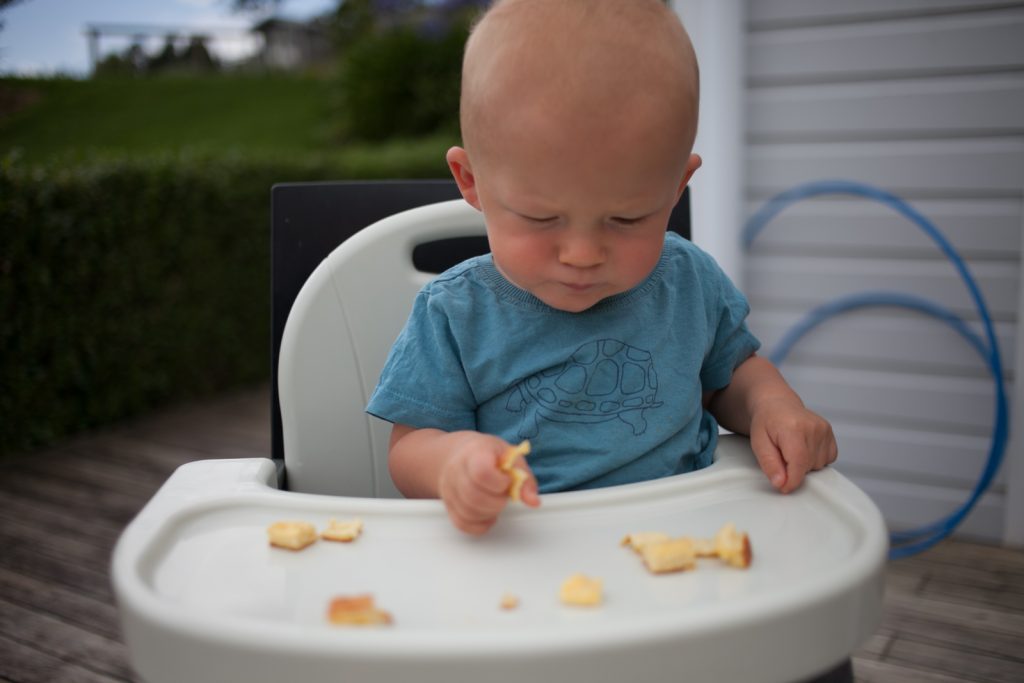
How to make it work:
- Close down the work time: The mornings that go smoothest are the ones when Gabe and I close our laptops when the first child comes out of the room so we can transition our brains into parenthood.
- Have a clear task list: Know what needs to happen to launch the day (and what the best order for that is). It is vital for making this transition smooth.
- Divide and conquer: One parent handles the kids and engages with them intentionally in a hands-on way, while the other starts the task list.
- Make decisions in advance: I plan out what breakfasts we have ingredients for at the beginning of the week, and allocate them to a day of the week. Gabe knows how to make all of the breakfasts, so he can jump right in and get started.

Block 2: Morning Time – a Fun, Flexible part of the Daily Summer Routine
Approximate time block: 9:00am – 12:00am
What is happening: The kids and I go outside and do a morning walk, and then the baby goes down for a nap. I read a chapter of our read aloud book to the older 3 kids, and then they have independent play time.
I work on various household or family admin tasks until the baby’s nap time is over. Once the baby wakes up, I nurse him, and make lunch.
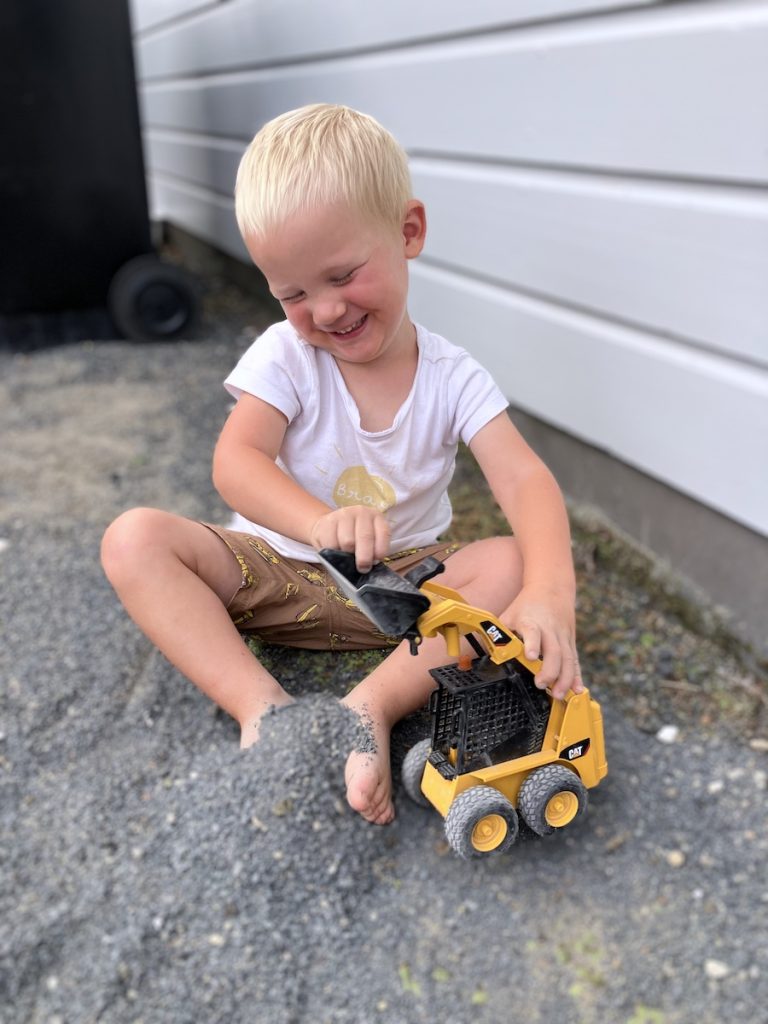
How to make it work:
- Do non-negotiable things first: I decided at the beginning of the summer that the kids and I were going to go on a walk after breakfast every day. We do the same path each morning, and it takes us 20 minutes. The kids know they’ll have the chance to read together and pursue their own interests afterward.
- Protect unstructured play time: I WANT our kids to get bored sometimes. There’s a lot of research that indicates boredom is a positive thing. So the chunk of time between finishing reading and lunch is their responsibility to fill.
- Be reasonable about your tasks: I find it’s easy to over-plan for me. Unfortunately, I find myself frustrated if my plans don’t happen!
So I try to plan just one or two tasks for this chunk of time that can be interrupted or the kids can join me in doing. I’ve found tasks like weeding the veggie garden, watering the plants, making granola, or folding laundry are perfect for this chunk of time. - Support variety: I try to let the kids do what sounds interesting to them. Painting, or going to the neighbors to visit, or playing dolls or making chalk car tracks are all possibilities!

Midday Transition: Lunch and the House Re-Set
Approximate time block: 12:00pm – 1pm
What is happening: We regather and eat lunch, we clean up from the morning, and then the kids get ready to have their daily quiet rest by using the toilet and collecting their things to entertain themselves quietly during their rest.
How to make it work:
- Keep lunches simple: We do a lot of simple lunches that are easy to make, easy to clean up, and easy for the kids to eat sitting out on the deck.
- Cast vision for the afternoon: I think one of the reasons for a successful quiet rest in our home is providing an incentive for what happens after quiet rest time.
When the kids get up, they get some kind of treat, be it a popsicle on the deck, a meet up with friends at a park, or getting to do a short Miss Linky or GVO Kids workout. - Provide clear expectations: Over lunch, I give each child a clean-up assignment. And then they may choose some items to take to their beds for quiet rest time.
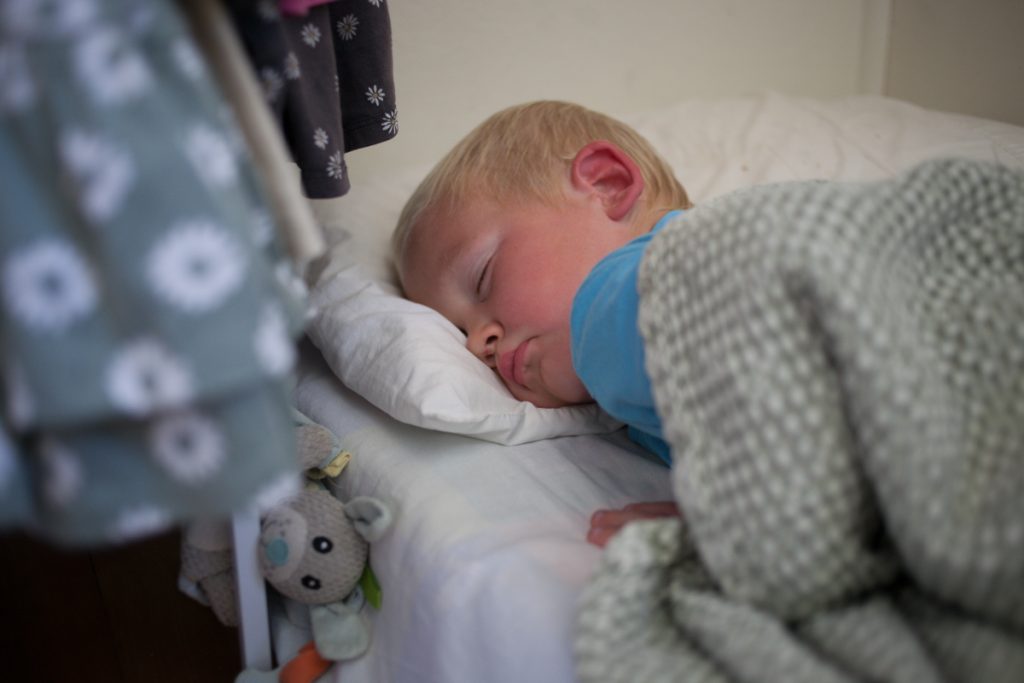
Block 3: Quiet Rest – Downtime During a Daily Summer Routine
Approximate time block: 1:00pm – 3:00pm
What is happening: The three older kids are resting on their beds doing quiet activities. If the baby’s naps have lined up, he is also down for a rest during this time. If they haven’t lined up quiet right, then this is one on one time with him, or he plays on the floor while I do my tasks.
This is my opportunity for a short deep-focus time if I need to get some more work done for the blog. This is also time for me to do a workout, take a nap, edit photos, prep dinner, read a book, or tackle a cleaning or organizing project.
How to make it work:
- Set clear expectations: Let your kids know what you expect of them, and what actions or behaviors (or noise!) is not meeting that criteria.
- Adapt to what your children need: If one of the kids really needs a nap, I separate that child out from the rest and make sure they have the opportunity to get that sleep.
Likewise, if my oldest has been exemplary and helpful all morning and asks if she can take her quiet rest time out on the deck, I like to reward her for that and let her set up a quiet recharge zone outside. - Have a plan for how to spend this time: This is a time for me to recharge as well. I know that if I sit and scroll social media for the whole time, I’m going to feel like I wasted 2 hours of my life! So I try to have some clear tasks or a specific plan for how I will use this time.
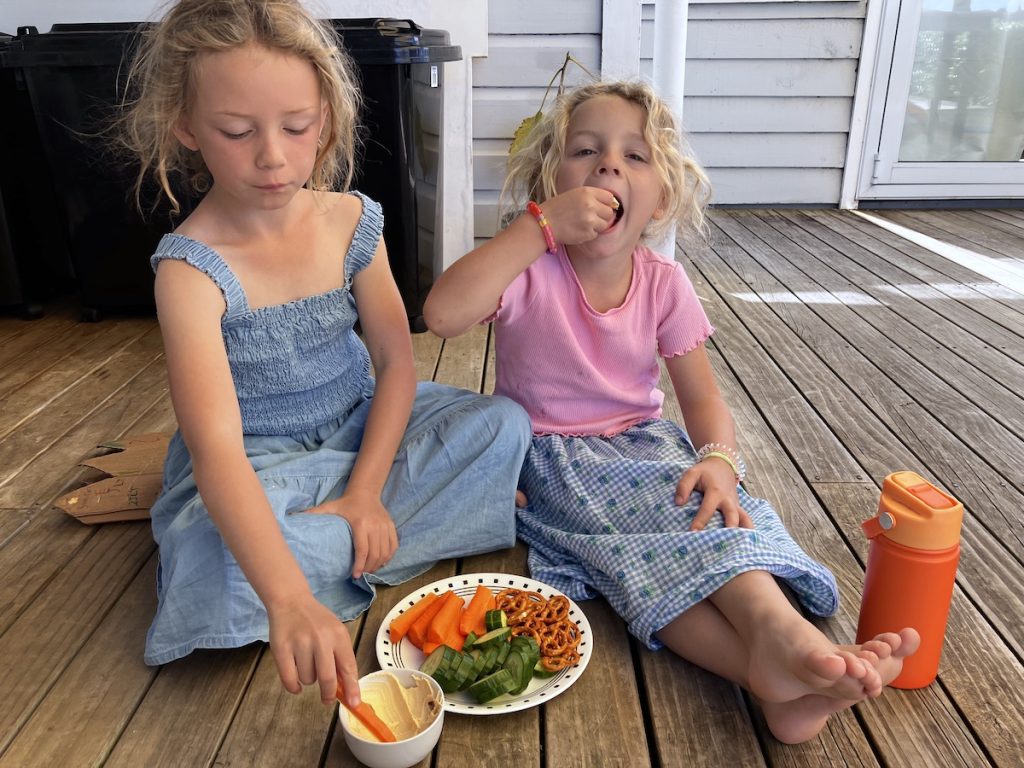
Afternoon Transition: Waking Everyone Up + ReGrouping
Approximate time block: 3:00pm – 3:30pm
What is happening: I wake up any sleeping kids, nurse the baby, and we get set up for whatever our treat is – a snack, popsicles or a fun workout or loading up in the car to go to a park.
How to make it work:
- Wrap up your individual pursuits on time: If my kids have fallen asleep, I’m ALWAYS tempted to let them keep sleeping so I can keep working on whatever I want to work on.
But this never results in a good afternoon, and it usually means bedtime is delayed! So practice self control and have a hard time reset for getting kids up from naps. - Keep choices limited: if serving popsicles, give two options. If offering a workout, give two options. If heading to a park, give two options of shoes to wear or activities to take.
- Prioritize having some kind of collective thing to relaunch the afternoon: doing something collectively seems to help get all the kids back on track to collaborative play and positive group dynamics.

Block 4: Late Afternoon – Options for Fun During our Daily Summer Routine
Approximate time block: 3:30pm – 5:15pm
What is happening: I do something with the kids, we meet up or host friends, or the kids have more independent play while I work on household admin tasks.
How to make it work:
- Vary the activity from morning independent play time: if the kids played outside with chalk and bikes during the morning time, this is a good time to direct them toward water play or building a fort.
- Use this time to get out of the house if needed and beat the heat: I like to do a park one or two days a week, which also makes for a great meeting spot for friends. Often, we’re ready for a little change of scenery, so this is when I sometimes plan any errands I need to do also.
- Try to have dinner mostly prepped: I’m a big fan of easy summer dinners. So I try to do as much of my chopping and cooking in advance if I can (often during the morning when the baby is down for a nap). Ideally, I want to be free to go out and do things, and roll home to get dinner on the table in 15-20 minutes.
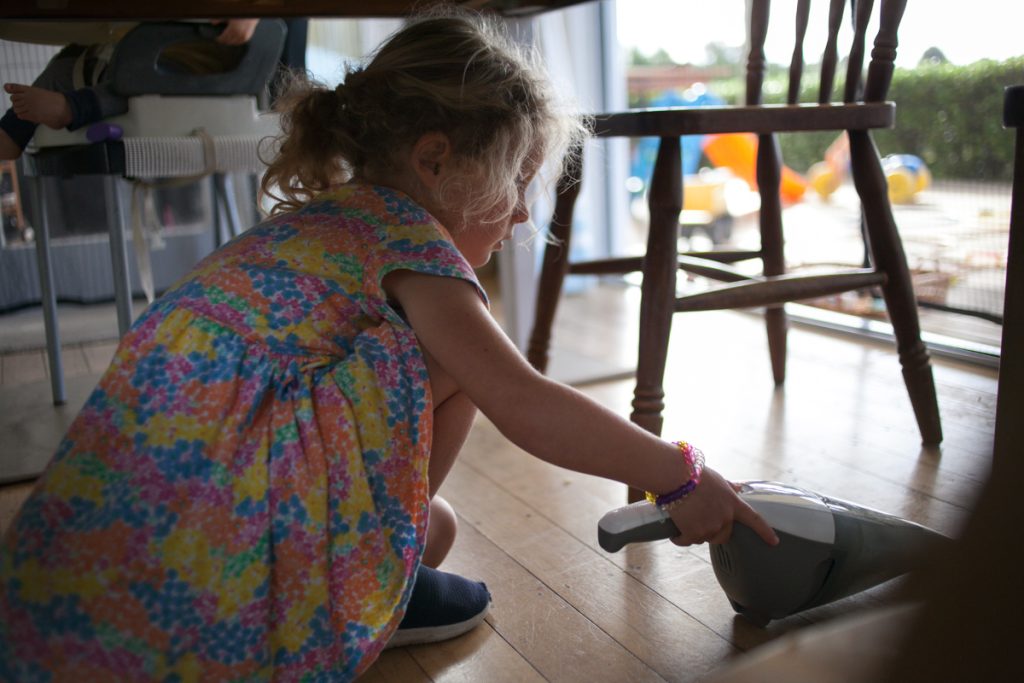
Evening Transition: Dinner, Dishes, and Household Clean Up
Approximate time block: 5:15pm – 6:30pm
What is happening: Gabe gets home from work, we get dinner on the table and eat. Then we clean up after dinner, and blitz through dishes and the less fun parts of the bedtime routine, like showers and teeth brushing.
How to make it work:
- Delegate some tasks to the kids: About 5pm or 5:10pm, I jump into the final prep time for dinner, which is when I will recruit the kids to help me get the house prepped for dinner. Have the kids help with cleaning up the common area, and start getting stuff assembled for bedtime.
- Have a task-list to divide and conquer as soon as dinner is done: Once dinner is done, it feels like a sprint through the clean up and bed time prep. Usually Gabe and I divide and conquer after the table is cleaned off.
One of us oversees the kids on their tasks (clean up chores, and then whatever needs to happen to get them ready for bed) while the other works in the kitchen to prepare it for a shut down overnight. - Communicate the plans to kids in advance: At 5pm, communicate to the kids what the next 30 minutes are going to look like. Such as: “In 10 minutes, we’re going to need to transition into clean up for dinner.”
Over dinner, communicate what the next 30 minutes are going to look like. Such as: “Once we’re finished with dinner, everyone is going to take their plates to the sink, and then each of us will do our after-food clean up chore. Then Mama is going to help you with teeth brushing while Daddy cleans up the kitchen.”
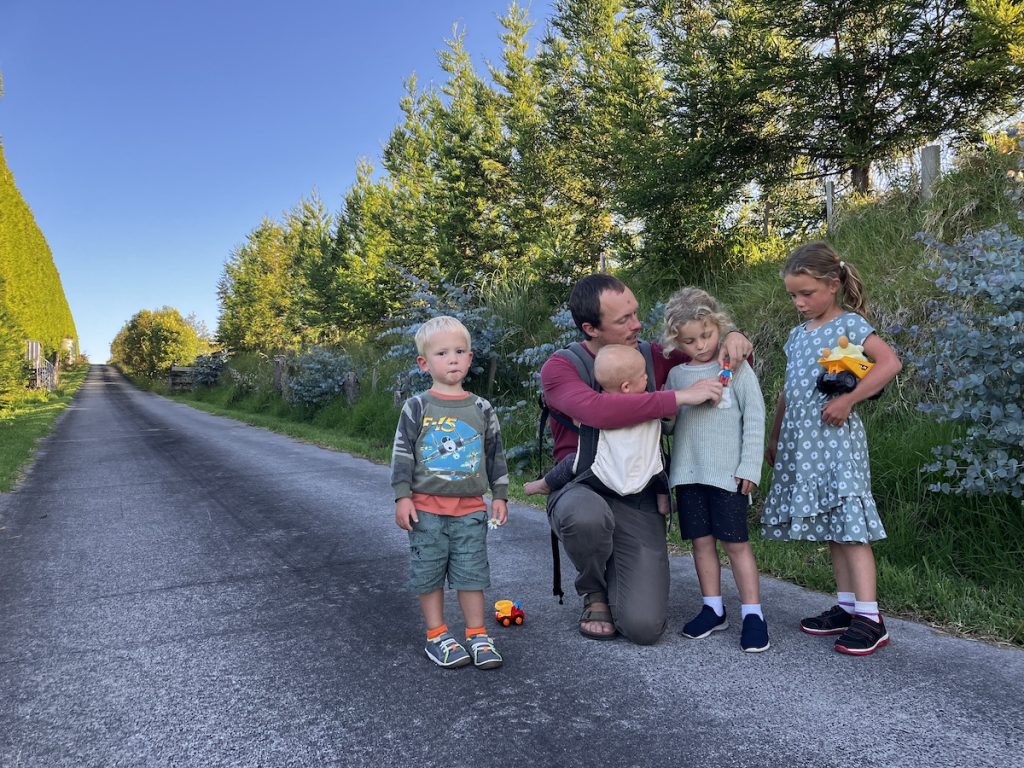
Block 5: Wind Down Time in our Daily Summer Routine – Kids to Bed and the Household Wrap Up
Approximate time block: 6:30pm – 9:00pm
What is happening: We go on a family walk, I nurse the baby and get him down for bed. We finish getting the kids ready for bed, and get the kids down. Gabe and I get ourselves organized for the morning, and catch up or do any final household administration tasks.
How to make it work:
- Set clear expectations with the kids: As we’re on our family walk, we communicate to the kids whether tonight will include book reading, how many books or chapters, or whether it is a quick good night time.
- Use the after-kids-are-down time wisely: This is usually when I’m at my most brain tired and wanting to just check out. I try to set a timer to incentivize myself to get through whatever final tasks I need to do without getting distracted on screens so I can crawl into bed and read.
- Keep the lights off: Since summer is when the days are longer, we have discovered we love to let the light slowly fade with the sun and avoid turning on many (if any) lights. This makes going to bed at 9pm or 9:30pm feel really normal for us, since that’s when the daylight is dwindling.

Make the Most of Your Summer: Grab Your Pen and Paper and Map Out Your Daily Summer Routine!
Having a consistent rhythm to you summer days MOST days (we aim for 4-5 days per week living this daily summer routine) will help you have a wonderful summer!
Getting your kids into a rhythm and routine will allow them to focus on developing the skills they might not get during the school year, like working through boredom.
And it will provide you with clear time blocks for when to do different household tasks as well as enjoying the summer seasons.
It will also help you rest, avoid blowing your budget on expensive entertainment, and allow your family’s relationships and connection to grow.
I would love to hear if you implement your own version of this daily summer routine and how it worked for you! Let me know in the comments below.
